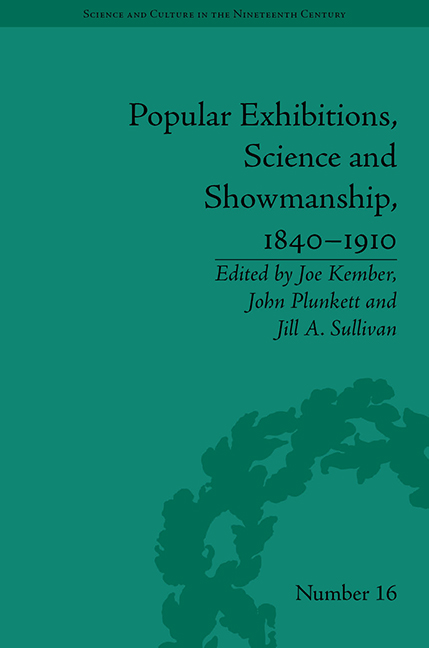Book contents
- Frontmatter
- CONTENTS
- Acknowledgements
- List of Contributors
- List of Figures and Tables
- Introduction
- Part I Science and Spectacle
- 1 Spectacle in Leicester Square: James Wyld's Great Globe, 1851–61
- 2 Fetes, Bazaars and Conversaziones: Science, Entertainment and Local Civic Elites
- 3 The Afterlife of Freak Shows
- Part II Word and Image
- Part III Staging Knowledge
- Part IV The Politics of Display
- Notes
- Index
1 - Spectacle in Leicester Square: James Wyld's Great Globe, 1851–61
from Part I - Science and Spectacle
- Frontmatter
- CONTENTS
- Acknowledgements
- List of Contributors
- List of Figures and Tables
- Introduction
- Part I Science and Spectacle
- 1 Spectacle in Leicester Square: James Wyld's Great Globe, 1851–61
- 2 Fetes, Bazaars and Conversaziones: Science, Entertainment and Local Civic Elites
- 3 The Afterlife of Freak Shows
- Part II Word and Image
- Part III Staging Knowledge
- Part IV The Politics of Display
- Notes
- Index
Summary
Located on the east side of London's Leicester Square, the Sablonière Hotel provided the setting for a well-attended meeting on the evening of 4 February 1851. The chairman declared that the purpose of the meeting was to consider what should be done with the square, which had become a public nuisance. James Wyld, a cartographer and geographical publisher, then rose and laid out an ambitious proposal for the construction of a colossal globe in the centre of the square for ‘the purpose of exhibition’. Wyld unveiled a ‘well-executed model of his monster globe, with plans, sections, and diagrams of the several compartments’. The unique building would nearly fill the large enclosure at the centre of the square. It would contain a globe-shaped representation of the earth sixty feet in diameter and adjoining rooms that would exhibit geographical and ethnographical specimens, including minerals and costumes. Wyld estimated that the total cost of the exhibition would be £21,000. He reported that he had purchased the freehold of the site of the enclosure from the Tulke family for £3,000. A proviso was built into the agreement: if, at the expiration of ten years, he chose to discontinue the exhibition, he would return the ground to the inhabitants of the square ‘in a neat and ornamental order’. Similarly, if the venture was unsuccessful and he was forced to close at an earlier period, he promised to restore the ground in an improved state.
- Type
- Chapter
- Information
- Popular Exhibitions, Science and Showmanship, 1840–1910 , pp. 19 - 40Publisher: Pickering & ChattoFirst published in: 2014



